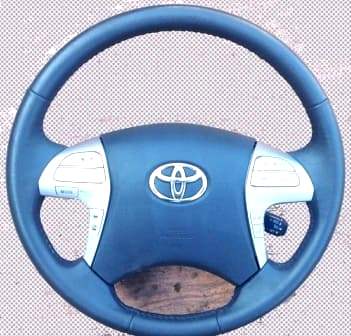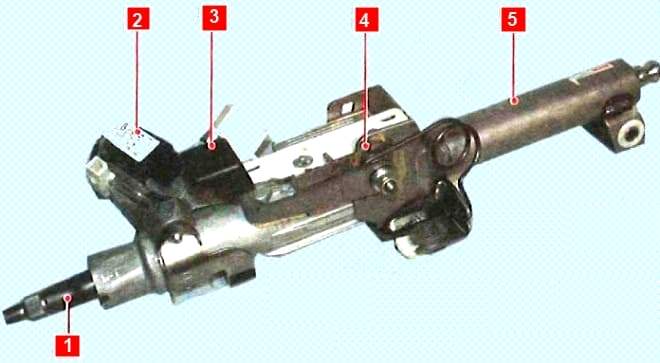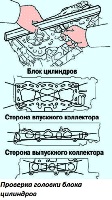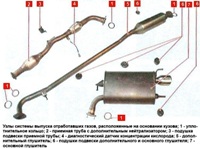Toyota Camry cars are equipped with power steering and rack-and-pinion steering
The steering of the car consists of a steering wheel, a steering column, a steering mechanism equipped with a hydraulic booster, and two steering rods connected by ball joints to the steering knuckles of the front suspension.

Steering wheel with driver's airbag, horn switch installed in the central trim of the steering wheel.
The steering wheel hub is attached to the steering column shaft with a nut.

The steering column is safety, adjustable in height, equipped with energy-absorbing elements that increase passive safety, and an anti-theft device in the ignition lock that blocks the steering wheel shaft
The intermediate steering shaft is connected to the steering shaft by a cardan joint
The steering column also houses the controls for headlights, turn signal, washer and windshield wiper.
The steering mechanism is installed in the engine compartment.

The steering box is mounted on the front suspension cross member.
The pressure of the working fluid in the hydraulic booster is created by a vane-type pump, which is installed on the engine bracket and is driven by a V-ribbed belt from the crankshaft pulley
A bypass valve installed in the pump maintains the required pressure of the working fluid in the power steering, depending on the engine speed
The power steering reservoir is installed in the engine compartment on the bracket of the battery mounting shelf and is connected by hoses to the power steering pump and to the working fluid return line
If the power steering fails, the ability to drive the car remains, but the effort on the steering wheel increases
Tie rods are attached to the steering rack with ball joints
The tie rod ends are attached to the steering knuckles of the front suspension using ball joints.
The tie rod is secured with a nut against turning in the tip
Rotation of the steering rod in the ball joint relative to the tip regulates the convergence of the steered wheels
Possible malfunctions of power steering and solutions
Increased steering free play and steering knocks:
- - violation of the tension of the spring of the rail stop - adjust the tension of the spring;
- - loosening the steering gear mounting bolts - tighten the bolts;
- - wear of the ball joints of the steering rods - tighten the fasteners or replace the joints;
- - wear of the cardan joint of the steering shaft - replace the cardan shaft
Steering wheel tight:
- - slippage of the power steering pump drive belt - adjust the belt tension;
- - damage to the power steering pump drive belt - replace the belt;
- - insufficient level of the working fluid - restore the level to the level;
- - air entering the hydraulic system - remove the air;
- - kinked or damaged hoses - fix kinks or replace hoses;
- - insufficient pressure of the hydraulic booster pump - fix the problem or replace the pump;
- - increased fluid leakage from the steering mechanism - replace defective parts;
- - misalignment or damage to the seals of the steering gear or distributor - replace the seals
Fuzzy return of the steering wheel to the middle position:
- - violation of the tension of the spring of the rail stop - adjust the tension of the spring;
- - difficult turning of the internal hinges - replace the tie rod ends;
- - wear of the cardan joint of the steering shaft or seal - repair or replace;
- - deformation of the steering gear rack - replace the steering gear;
- - damage to the gear bearing - replace the steering gear;
- - kinked or damaged hoses - fix kinks or replace hoses;
- - damage to the pressure control valve - replace the pressure control valve;
- - damage to the bearing of the pump rotor shaft - replace the bearing
Noise (knocking) in the steering:
- - touching the hoses on the body - lay the hoses correctly;
- - loosening of the steering gear mount - replace the mount;
- - loosening of steering rods or ball joints of steering rods - replace worn parts;
- - worn steering rods or ball joints - replace worn parts
Increased power steering pump noise:
- - insufficient level of the working fluid - restore the fluid level to normal;
- - air entering the hydraulic system - remove the air;
- - loosening the pump mounting bolts - tighten the pump mounting











